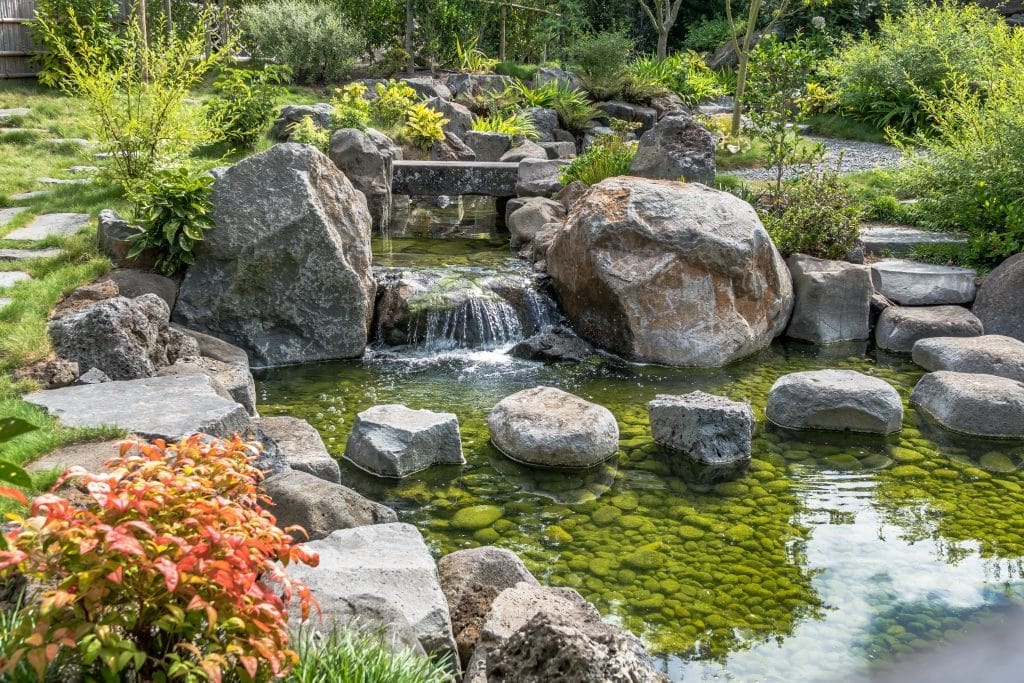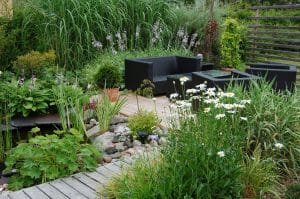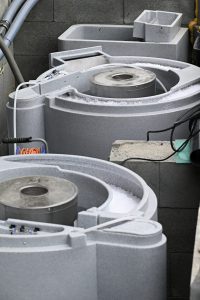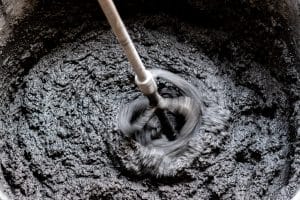
Why Pond Rocks Will Make You Love Your Pond Even More
Adding pond rocks can enhance the beauty and function of any water feature.
Rocks not only serve as a stunning visual element but also provide important benefits for pond health and wildlife.
They create a natural habitat for fish and plants while helping to stabilise the environment.

Choosing the right rocks can transform a plain pond into a vibrant ecosystem. The right materials can improve water quality and encourage beneficial bacteria, making the pond more inviting for aquatic life.
Integrating these features can also simplify maintenance tasks, ensuring the pond remains a low-stress part of the garden.
Creating a gorgeous pond is within reach for anyone willing to explore the options in rocks.
There is a variety of styles and types available, allowing for creative expression that makes each pond unique.
This blog will explore how rocks can make any pond truly special.
Key Takeaways
- Rocks improve the appearance and health of ponds.
- The right selection can benefit aquatic plants and wildlife.
- Incorporating rocks can simplify maintenance tasks.
The Essential Role of Rocks in Ponds
Rocks play a vital part in maintaining a healthy pond ecosystem. They support beneficial bacteria, improve water quality, and help maintain biodiversity.
Supporting Beneficial Bacteria
Rocks provide surfaces where beneficial bacteria can grow.
These bacteria are essential because they help break down organic matter.
They convert harmful substances into less toxic forms, making the pond environment healthier.
The rough surfaces of rocks create ideal spots for bacteria to cling to.
As these microorganisms multiply, they aid in filtering the water. This natural process lowers toxins and improves the overall health of the pond.
Improving Water Quality
Rocks also play a key role in improving water quality.
They help stabilise the temperature within the pond, creating a more consistent environment for aquatic life. This stability can lead to healthier fish and plants.
Additionally, rocks can act as natural filters.
They trap debris and prevent it from floating freely in the water.
This keeps the pond cleaner and helps maintain clear visibility.
Cleaner water promotes better photosynthesis for aquatic plants, supporting a balanced ecosystem.
Maintaining Biodiversity
Rocks contribute to maintaining biodiversity in ponds.
They provide habitats for various organisms, such as insects, amphibians, and fish. Different sizes and types of rocks create varied environments for these species.
Having places to hide and breed increases the number of species in a pond. This variety supports a balanced ecosystem. With more biodiversity, the pond becomes more resilient to changes and challenges in the environment.
Choosing the Right Pond Rocks

Selecting the right pond rocks is essential for enhancing the beauty and functionality of a pond.
The size, type, and natural appearance of the rocks play a significant role in how they fit into the pond’s environment.
Selecting the Ideal Size and Type
When choosing pond rocks, size matters.
Small rocks, like gravel, work well for paths and shallow areas. Larger stones, such as river rock, can create a dramatic look around the pond’s edge.
Recommended Sizes:
- Small (1-2 inches): Great for covering soil.
- Medium (3-5 inches): Suitable for decorative arrangement.
- Large (6 inches and up): Ideal for more prominent features.
Consider the pond’s overall design.
For a natural look, varied sizes can add depth. Matching the rocks to the pond’s shape and size ensures a cohesive appearance.
Natural Appearance Considerations
The natural appearance of pond rocks is vital for blending them into the landscape.
Selecting rocks that resemble local geology makes the pond look more authentic.
Types of Rock to Consider:
- River Rock: Smooth and rounded, ideal for a gentle look.
- Slate: Flat and angular, adds a modern touch.
- Granite: Rough textures, perfect for a rugged feel.
Choosing colours that harmonise with the surrounding vegetation enhances the pond’s visual appeal.
Earthy tones often work best, as they help integrate the rocks with plants and water.
Aesthetic Benefits of Pond Rocks

Pond rocks add beauty and character to any pond setting. They enhance the natural appearance and create visual interest, making the area more inviting and serene.
Enhancing Natural Beauty
Using pond rocks introduces a varied texture and colour that mimics nature.
These rocks can blend seamlessly with the landscape, providing a rustic charm. They come in different shapes and sizes, allowing for a customised look.
When arranged thoughtfully, pond rocks can soften the stark lines of a pond’s edge. This creates a more organic feel.
Using natural colours, such as greys, browns, and earthy tones, helps the rocks connect with water and plants.
Creating Visual Interest
Pond rocks create focal points within the landscape.
Their varied forms can break up monotony, drawing the eye along the pond’s border. These elements can guide the viewer’s gaze and encourage exploration.
Arranging rocks in creative patterns can also enhance the water’s movement. This can make the pond appear more vibrant.
Additionally, adding small gravel areas alongside larger rocks can create contrast and a diverse habitat for wildlife.
Together, these features promote a harmonious blend of rock and water, creating a peaceful retreat.
Practical Advantages of Rocks and Gravel

Rocks and gravel offer several practical benefits to pond owners. These materials help control algae growth and prevent erosion, making ponds healthier and easier to maintain.
Algae Growth Reduction
Using rocks and gravel around a pond can help lower algae growth.
Algae thrive in warm, sunny areas with plenty of nutrients. When rocks are added, they can provide shade, limiting sunlight that algae need to grow.
Moreover, gravel can absorb excess nutrients like nitrogen and phosphorus from the water.
This helps to reduce food sources for algae, leading to clearer water.
Regular maintenance is easier too.
With fewer algae, pond owners spend less time cleaning and managing algae blooms. Healthy ponds promote a better environment for fish and other wildlife.
Erosion Control
Rocks and gravel are effective in preventing erosion around ponds.
Erosion happens when water wears away the soil, which can damage the pond’s edge and cause water levels to drop.
By placing rocks along the shoreline, it creates a barrier that stabilises the soil.
The weight and structure of the rocks help hold the ground in place, especially during heavy rains.
Gravel can also help with drainage. It allows water to flow without washing away soil. This makes the pond area more resilient, reducing maintenance needs over time.
Integrating Aquatic Plants with Pond Rocks

Aquatic plants and pond rocks can create a beautiful and balanced environment. When integrated properly, these elements enhance biodiversity and provide new habitats for aquatic life.
Creating Habitats for Plants
Pond rocks offer great opportunities for aquatic plants to thrive.
By placing rocks in various depths, they create different zones. This is important as some plants prefer shallow areas, while others thrive in deeper water.
Rocks provide support for rooted plants, giving them stability.
Plants like water lilies and cattails can grow around these rocks, creating a lush look.
Additionally, the spaces between the rocks allow smaller plants and beneficial algae to flourish.
These practices help increase biodiversity.
More types of plants attract different insects and animals, which can make the pond ecosystem healthier. Each rock and plant choice supports varied life forms, making the pond more enjoyable for everyone.
How Pond Rocks Affect Water Features
Pond rocks play a significant role in the functioning and appearance of water features. They influence water dynamics and can enhance the overall quality of the pond environment.
Influence on Water Dynamics
Pond rocks affect how water flows and moves.
They create natural barriers and shapes that help to direct the current. This can prevent erosion and keep the banks stable.
Additionally, rocks can create areas of calm water. This is important for fish and other aquatic life.
The placement of rocks can also influence how water circulates throughout the pond.
Proper movement helps to maintain oxygen levels, which is essential for fish and plants.
Lastly, rocks can provide surfaces for beneficial bacteria to grow. This can improve water quality by breaking down waste and keeping the pond clean.
The Impact of Rocks on Pond Wildlife
Rocks in a pond play an essential role in enhancing wildlife interactions. They provide pivotal habitats that foster biodiversity. These elements create a refuge for various aquatic species, ensuring a thriving ecosystem.
Providing Shelter from Predators
Pond rocks offer important cover for fish and other aquatic creatures. They create hiding spots that protect vulnerable species from predators.
- Hiding Places: Small fish can dart into crevices and under larger stones to escape larger fish or birds.
- Nesting Sites: Some amphibians, like frogs, use rocks as nesting areas, keeping their eggs safe from threats.
In addition, the irregular shapes of rocks provide shadows. These shaded areas help regulate water temperature, creating a more comfortable environment for wildlife.
This combination of safety and comfort contributes significantly to a diverse pond population.
Rock Selection for Specialised Ponds
When selecting rocks for specialised ponds, it is important to focus on aesthetics and the health of the aquatic life.
Koi Pond Considerations
For koi ponds, choosing the right rocks can significantly impact the fish’s health and habitat.
Smooth, rounded river rocks are ideal as they reduce the risk of injury. Sharp or jagged stones should be avoided.
The size of the rocks matters too.
They should be large enough to create hiding spots but not so big that they obstruct water flow or cleaning.
Benefits of Using River Rocks:
- Natural Look: Blends well with the pond’s environment.
- Ease of Maintenance: Smooth surfaces prevent algae build-up.
- Fish Safety: Fewer chances of injury for koi.
Selecting rocks with these features ensures a safe and visually pleasing koi pond.
Pond Rocks and Maintenance
Pond rocks can greatly ease the maintenance of a pond. They contribute to a cleaner environment and can enhance the durability of the pond area.
Simplifying Cleaning Processes
Using pond rocks can make cleaning easier. They prevent sediment from building up in the pond, which can lead to algae growth.
By adding a layer of rocks and gravel, the water flow improves, allowing for better filtration.
Regular cleaning can involve gently brushing off the rocks. This helps to remove any debris that may settle on the surface.
It is advisable to avoid harsh chemicals when cleaning, as they can harm aquatic life.
Instead, using a net or a simple sieve can effectively clear away larger debris.
Long-Term Durability and Care
Pond rocks are durable and require minimal care. They can withstand weather changes without breaking down.
This longevity means less frequent replacement.
They also support the pond ecosystem. The surfaces of the rocks provide hiding spots for fish and beneficial microbes.
These microbes help in breaking down waste, contributing to a healthier pond.
While natural rocks are low maintenance, regular checks are recommended.
This includes inspecting for any loose stones or signs of erosion. Keeping the rocks in good shape can help maintain the pond’s appearance and functionality.
The Economic Aspect of Using Pond Rocks
Using pond rocks can be a practical choice for pond owners. They offer benefits that go beyond aesthetics, impacting maintenance costs and long-term savings.
Cost-Effectiveness of Rock Features
Pond rocks can be a cost-effective option for landscaping.
Unlike other materials, rocks do not require frequent replacement. This durability reduces long-term expenses, making them a smart choice for many.
The initial investment might seem high, but the low maintenance needs pay off.
Regular upkeep involves simple cleaning and occasional repositioning. This simplicity helps save on labour costs.
Additionally, rocks can support natural ecosystem balance. They provide habitats for beneficial creatures, which can lead to fewer problems like algae growth.
These benefits reduce the need for chemical treatments.
DIY Tips for Adding Rocks to Your Pond
Adding rocks to a pond can enhance its appearance and provide benefits for fish and plants. Proper planning and careful installation are essential for a successful project.
Planning and Placement Strategies
Before adding rocks, it’s important to plan where they will go.
First, consider the size and shape of the pond. Choose rocks that complement the water feature.
Larger boulders create a strong focal point, while smaller gravel can fill in gaps.
Next, determine the arrangement of the rocks. Create layers to add depth.
For example, place larger rocks at the back and smaller ones in front. This makes the pond look more natural.
Also, think about maintenance.
Ensure that there is space to clean the pond without moving large rocks. Additionally, avoid overcrowding, as this can lead to debris build-up and decreased water quality.
Installation Techniques
When installing rocks, safety is key. It is advised to wear gloves and sturdy footwear.
Start by laying out the rocks before placing them in the water. This helps to visualise the final look.
For larger stones, use a pry bar or similar tool to adjust their position. Place them securely so they are stable.
When using gravel, spread it evenly along the pond’s edges and bottom. This not only improves appearance but also aids in filtration.
Once installed, monitor the pond regularly. Check for any shifting or movement of the rocks during storms or heavy rains.
Regular maintenance ensures the rocks remain in place and the pond stays beautiful.



